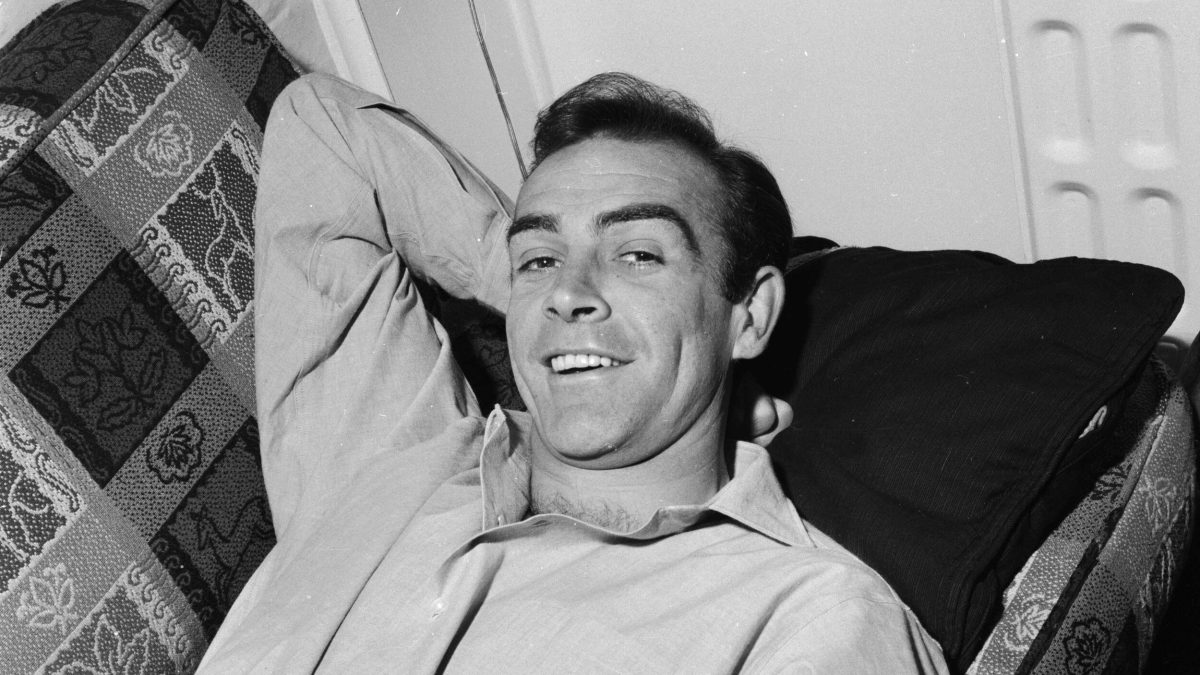Photo Courtesy of Vanity Fair
On Saturday, Oct. 31, Sir Sean Connery died in his sleep at the age of 90. In a statement, Connery’s son Jason confirmed that his father spent the end of his life in the Bahamas, surrounded by family. Connery is best known for his performance as the British Secret Service agent James Bond, portraying the character in a total of six films from 1962 to 1971. Beyond playing Bond, Connery was an established actor, appearing in multiple successful films including “Marnie” (1964), “Indiana Jones and the Last Crusade” (1989) and “The Hunt for Red October” (1990), as well as the 1987 crime drama “The Untouchables,” which earned him an Academy Award for Best Supporting Actor.
Born Thomas Sean Connery on Aug. 25, 1930, in Edinburgh, Scotland to a working-class family, the renowned actor did not have an easy upbringing. After leaving school at the age of 13, Connery worked various odd jobs before enlisting in the Royal Navy, only to be tossed three years later due to a medical condition. Connery continued to work multiple jobs in order to get by, spending his spare time bodybuilding and modeling. In 1953 he was offered a weekly contract with Manchester United, but declined the offer in favor of trying his luck at acting on the stage for one of the local theaters he had been working for. A year later, Connery began performing in the musical “South Pacific,” earning his first film role as an extra in “Lilacs in the Spring” (1954) around the same time.
After starring in the 1957 BBC television production “Blood Money,” Connery was contacted by producers Albert R. “Cubby” Broccoli and Harry Saltzman about a role that would change his career – and the silver screen – forever: the role of James Bond. Connery was the first actor to portray the famous secret agent, launching the longest-running movie franchise of all time. “Dr. No,” the first Bond film, was released Oct. 26, 1962, becoming a box office hit and kick-starting Connery’s acting career. A continued string of successful Bond films followed – “From Russia with Love” (1963), “Goldfinger” (1964), “Thunderball” (1965) and “You Only Live Twice” (1967).
Despite starting one of the biggest multibillion-dollar franchises and becoming a 1960s cinema icon and sex symbol, Connery did not want to be known only for his role as the British spy. Connery eventually retired from the role in 1971, his last Bond film being the moderately successful “Diamonds Are Forever.” Despite the mixed reviews of the film, the actor was paid a handsome $1.25 million, which he used to establish the Scottish International Education Trust, an organization with the goal of financially supporting the careers of young Scottish artists. Following the release of “Diamonds Are Forever,” Connery went on to star with other up-and-coming actors, including Sir Michael Caine in “The Man Who Would be King” (1975) and later Michael Slater in “The Name of the Rose” (1986), the latter of which earned Connery a BAFTA for best actor at the British Academy Film Awards. A year later, he would go on to win his first and only Academy Award for his portrayal as tired Irish cop Jimmy Malone in “The Untouchables” opposite actors Kevin Costner, Robert De Niro and Andy Garcia.
Connery’s career success continued in the late 1980s and 1990s. He starred alongside Harrison Ford as the comedic Henry Jones Sr. in “Indiana Jones and the Last Crusade” (1989) and defecting Soviet Captain Marko Ramius in the 1990 spy thriller “The Hunt For Red October.” Both roles earned him subsequent BAFTA and Golden Globe nominations.
In 2000, Connery was knighted by Queen Elizabeth II in a ceremony at Holyrood Palace in Edinburgh. He turned down offers to play The Architect in “The Matrix Reloaded” (2003) and Gandalf the Grey in Peter Jackson’s “The Lord of the Rings” trilogy (2001-2003) before he officially stepped away from the silver screen in 2006, announcing his retirement. Despite no longer acting, he was very much involved in politics, often voicing his support for Scotland’s independence from the United Kingdom as far back as the 1980s, which hindered his knighting for many years. The actor even went as far to offer financial assistance to the Scottish National Party. Connery retired to the Bahamas and lived peacefully until his death. On Sunday, Nov. 1, his wife Micheline Roquebrune revealed in a statement that he had been suffering from dementia in his final years.
Following his death, there was an outpouring of tributes and statements from fellow actors and filmmakers who had worked alongside him, including Caine, George Lucas, Alec Baldwin, Shirley Bassey, Sam Neill, Nicolas Cage, Catherine Zeta-Jones. The actors who portrayed James Bond following Connery’s retirement from the role also released statements of support, with Daniel Craig, the current face of James Bond, calling Connery “One of the true greats of cinema.” James Bond producers Barbara Broccoli and Michael G. Wilson released a statement crediting Connery for the series’ long-lasting impact, saying, “He is undoubtedly largely responsible for the success of the film series and we shall be forever grateful to him.”
Connery was not only a phenomenal actor but an influence on the careers of many aspiring artists. There is no doubt of the impact he left behind on cinema and there is no question that his impact will only continue to inspire others in the film industry for years to come. Connery is survived by his substantial body of work, along with his wife and son.







